A time delay relay is a type of control relay that has a built-in feature of time delay operation. The normal relay changes its contacts instantly on energization and de-energization of the relay coil. On the other hand, the time delay relay closes or opens its contacts before or after some time delay.
A normal relay acts as a switch, controlled through an electrical circuit. When the coil and electromagnet receive power supply, one or more contacts activate. It allows other circuits to open and close independently.
Importance of Relay
Relays have a fundamental importance in the industry, especially in those processes when there is a need for equipment control from the remote. To interrupt alternating electrical energy, the Electric Relay is the most appropriate tool to achieve the objective.
The relays have wide applications in the part of the automation processes of any kind, such as packaging, assembly, and decentralized mechanisms.
What are timed relays?
A timed relay is a kind of control apparatus that uses electromagnetic principles to realize delay control.
Using a rotary knob built into the timer itself, we can regulate the time. Pre-set timing can range from milliseconds to hours, and even days. In industrial control systems, however, it is usually in the order of seconds and minutes. They allow us to control the time when activating or deactivating a process.
The timed relays make the delayed connections by activating their contacts when the set time of the timed relay passes after the activation of the relay.
The timed relays with disconnection delay cause the timed contacts to deactivate after the selected time has elapsed since the timed relay coil is deactivated. These relays normally have a timed relay power supply and a contact that controls the timing activation.
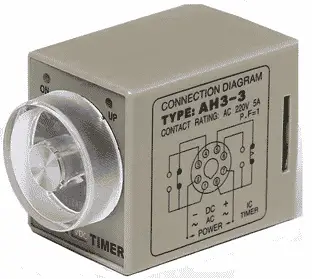
Principle of Time Relay
A timed relay is a kind of time relay, whose contacts change over after some time(set time), after receiving the activation signal by the detection element of the relay.
On energization or de-energization of the relay, the timer starts counting from zero to the present time. This is called accumulated time. Once accumulated time and pre-set time are equal, the timer’s contacts change the state.
Types of Timing Relays
There are three types of time relays. These are;
- Timed-on connection (TON, Timer ON Delay),
- Timed-off disconnection ((TOF, Timer OFF Delay) and
- Timed-on connection and disconnection. It is represented as KT x, where “KT” stands for a contactor or timed relay. The number “x” indicates its position within the installation.
1. Time-on connection (TON, Timer ON Delay)
The timed-ON connection is also known as “Timer On Delay” or “To work with delay”. When a timer coil activates (energizes), its contacts change position after a certain amount of time.
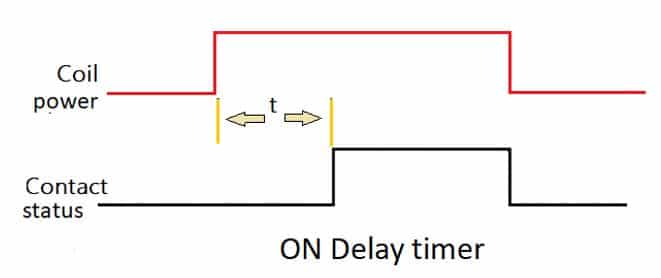
Once the current reaches the timer coil, after some time “t”, the contacts change position. It means that once the contact is an open move to a close state and the closed contacts open(working state).
The contacts will stay that way as long as the coil receives the power supply. The contacts return to their resting state immediately after the de-energization of the coil.
If no power reaches the timing relay coil, they will return to their initial state (at rest).
2. Time-on disconnection (TOF, Timer OFF Delay)
It is also called sleep delay or “OFF Delay” in general. These timers change the contact position when the power reaches the timer coil. After removing the power supply from the coil, the deactivation time “t” begins to run so that they return to their initial state (rest).
“t” is the time from the disconnection of the coil until the contacts change position. The contacts will remain in the working position as long as the coil receives the power supply.
3. Off Delay Timer
In the below diagram, after the de-energization of the coil, the contacts return to their resting positions “t” seconds later. The diagram does not specify the time, but the activation is called a trigger, and the contacts are outputs
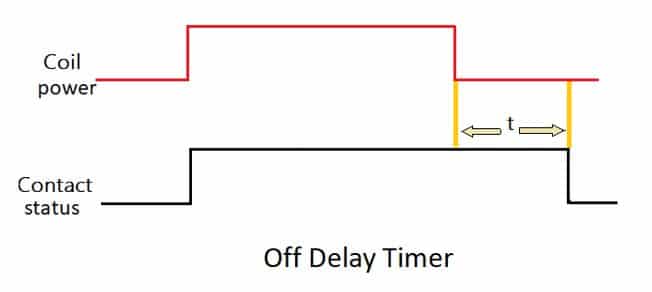
Normally open time delay close (NOTC)
Upon energizing, the relay coil energizes and the contact opens immediately (instant open).
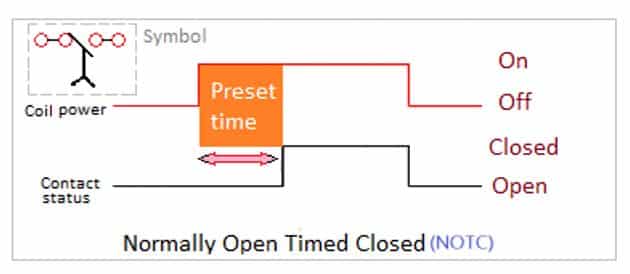
Normally closed Time delay Open (NCTO)
Upon energization, the relay energizes after some time, and the contact opens only after a time delay. The contact closes immediately when the relay coil de-energizes. Normally closed Time delay Open (NCTO) relay uses normally closed contacts instead of normally open contacts.
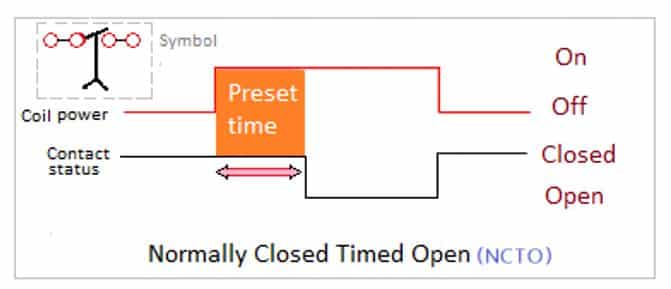
Normally open Time delays Open (NOTO)
After de-energization, when the relay energizes, the contact closes and remains closed for some time after removing power from the coil.
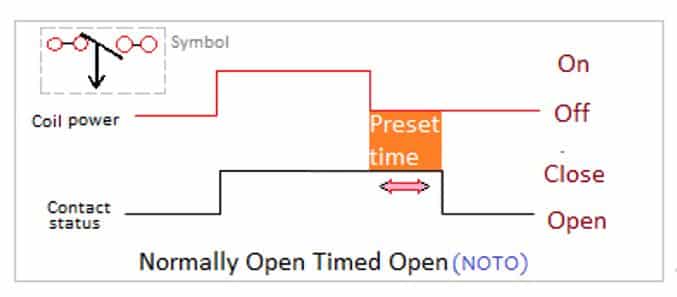
Normally Closed Time delay Close (NCTC)
After de-energization, the relay has the same setup as the previous one with the exception that the contacts are in a normally close(NC) state.
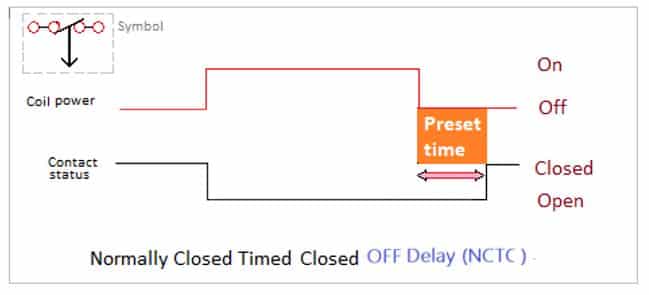
Advantages of Time Delay Relays
- Allows electrical separation between small and large currents.
- With this device, it is possible to manage the different variables such as voltage, power, and control voltages.
- It is possible to control the relay from a remote station
- Time delay relays are useful for implementing control logic with PLCs or DCS systems.
- A time delay relay is useful for scheduling the start or stop of the machinery.
- Time delay relay allows delaying time setting from a few seconds to even hours.
- With time delay relays it is possible to save energy.
Applications of Time Delay Relays
- Automatic Control
- Time delay helps in remote control operations.
- Communication
- Helpful in delay in automatic on/off of electronic equipment